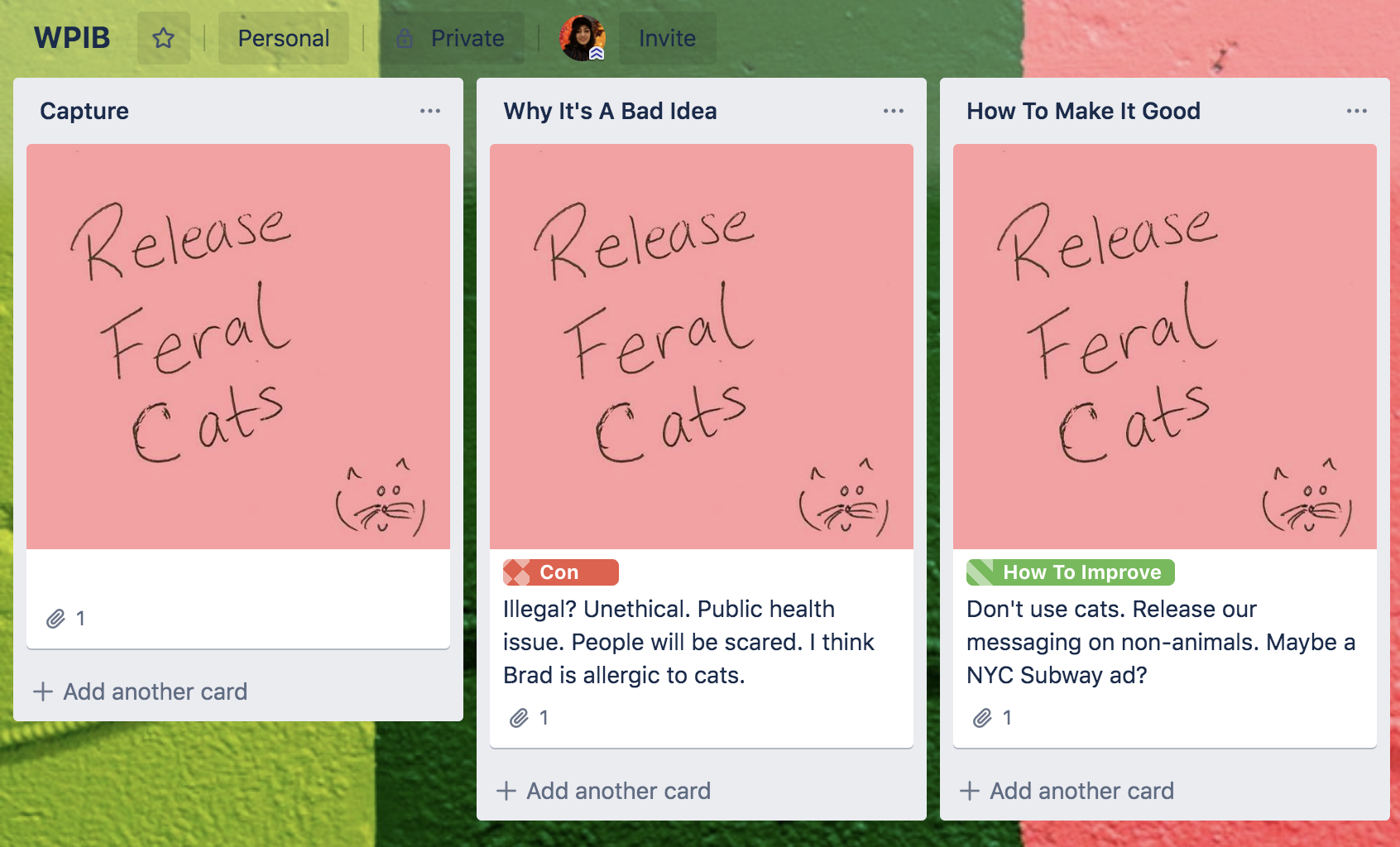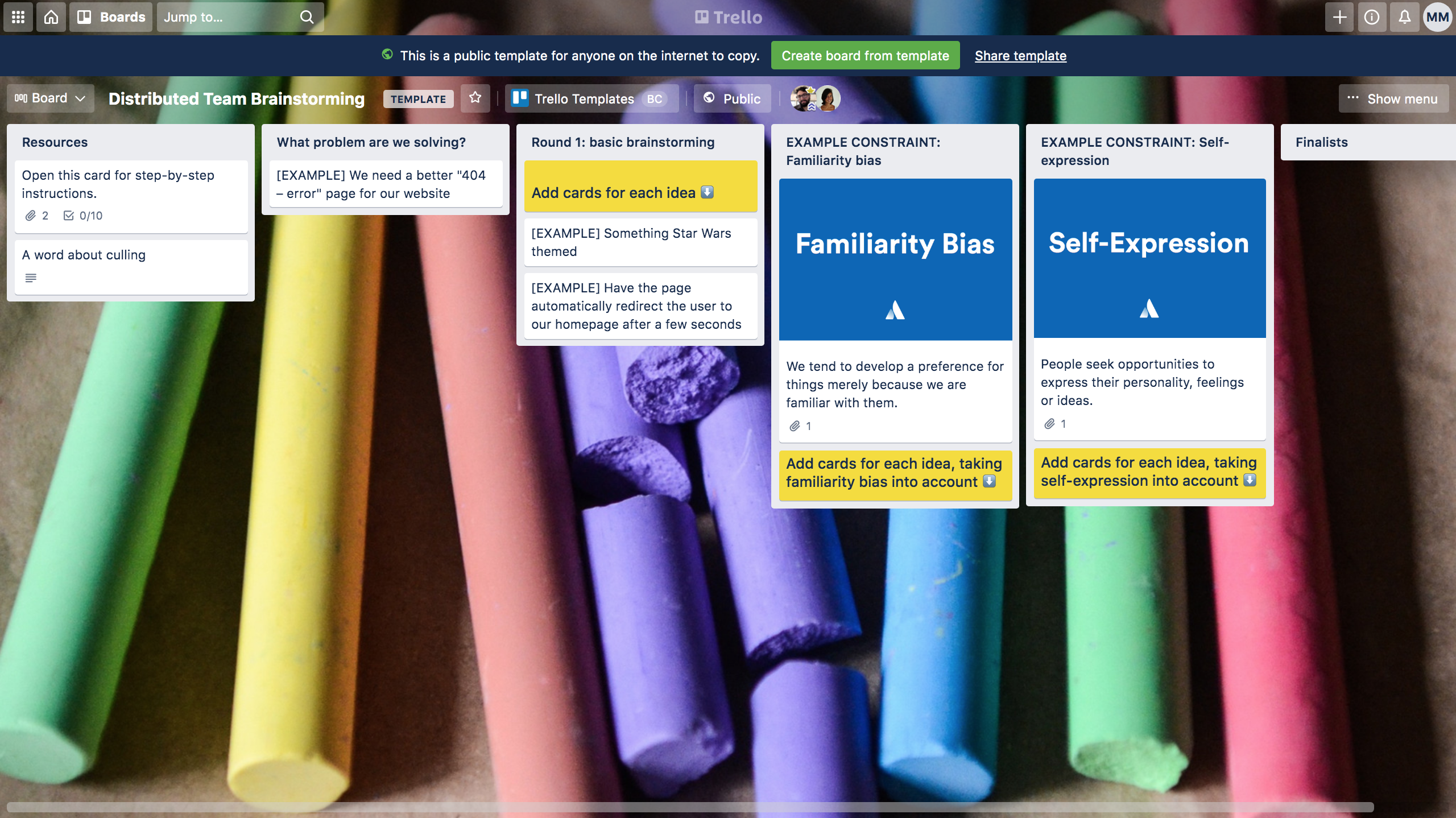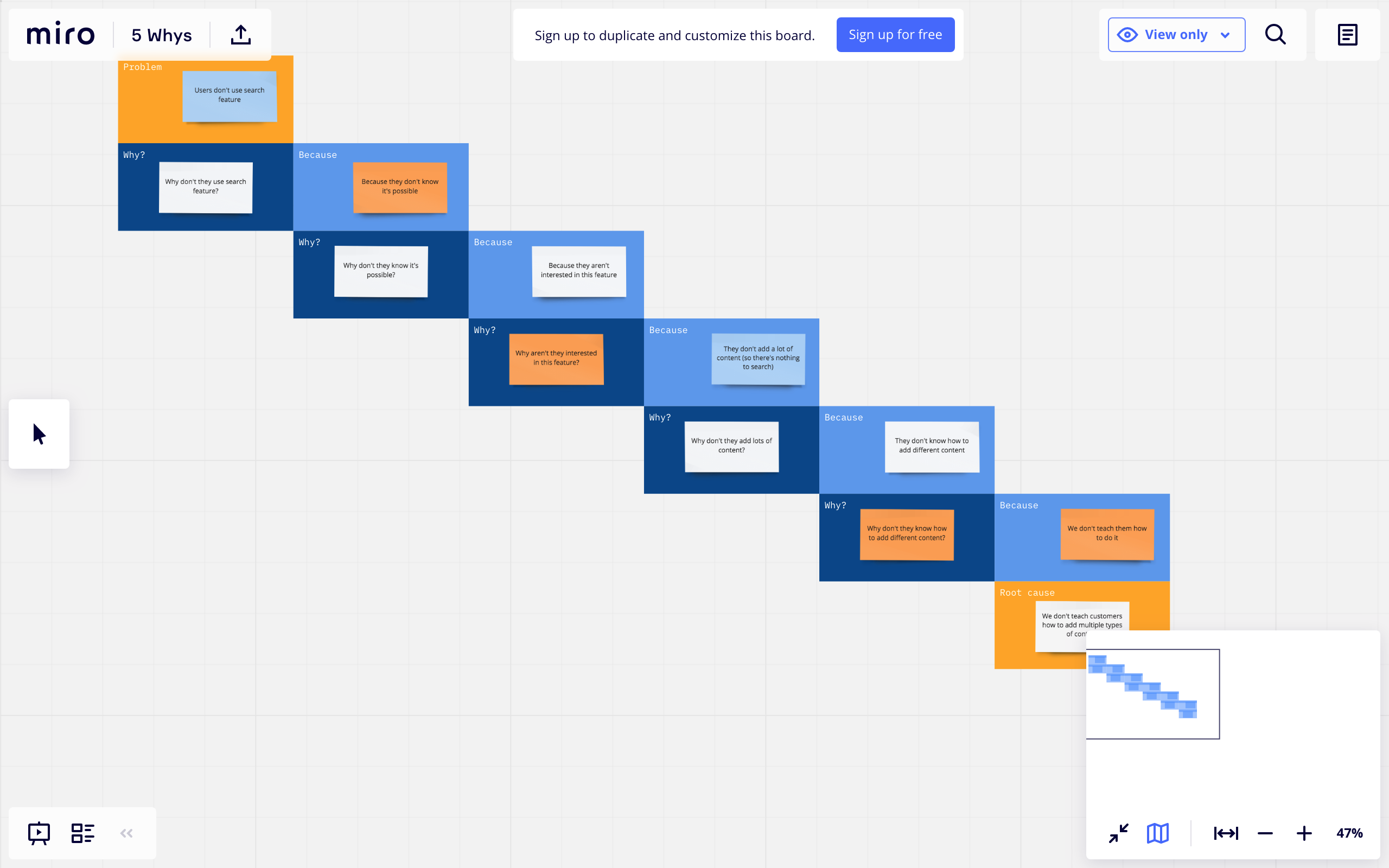The truth about content ideas is that they’re fireflies. Showing up only at selected times and is tough to capture sometimes.
A good idea, for example, can pop into your mind in the middle of an employee performance meeting. Or, as is so typical of ideas: when you’re heading to bed.
With capturing content ideas in your mind being so tough, how can you collaborate on ideas in your agency? Tough question, right? Perhaps you’re even struggling with bringing your distributed team together to share their content ideas. Or, chances are, you’re looking to revamp or fine-tune your agency’s content collaboration process.
Whatever the case may be, you’ll find this piece helpful as we’ve talked to 18 agency owners to learn how they share content ideas across the board and how you can too. We’ll share how to get started, the tips to follow as well as the tools that can help you.
Ready to learn? Let’s get going:
Get started: Steps to take before any content collaboration sessions
These are do-it-once action steps that you need to do for each client – whether old or new ones that you. But, first:
- Create a sharing mindset ????
- Pin important information on your project management software ????
✔ Create a sharing mindset
This is easier said than done. However, a must that you can’t give the backseat.
You could take as simple a step as calling a meeting to encourage your team using a board portal software to encourage your team that they need to be open about sharing their ideas. Or, you can take the time to have one-on-ones with employees to push them to be open with their ideas.
Either way, it starts by being clear, then proactively working to foster an idea-sharing environment. Now, what’s an idea-sharing environment? It’s a positive-energy-flowing work culture that appreciates all ideas while celebrating the winning ones. ????
In a typical situation, employees hesitate to share their ideas for fear of others pointing out how bad it is (even when it’s only bad in their head!). Another common roadblock: people thinking others on the team are more experienced to share their ideas. Either way, chances are you’re losing on valuable ideas.
So make sure:
- Nobody laughs at a bad idea.???? Make it a rule that no idea is bad and no one should disagree (impolitely) or discourage another person as they share their content ideas.
- Offer positive reinforcement. That is, even if an idea is ugly, don’t turn it down in public. Do so privately while sharing constructive feedback.
- Incentivize winning ideas. ???? Whatever idea you finalize, make sure its owner is rewarded. This could be a book voucher, an online course discount code, or a concert ticket – whatever interests the individual.
It’s also crucial you encourage mistakes as A-List Profiles’ Fahima Anwar suggests. In a Forbes Council Post, Anwar explains:
“Understanding that not all creative ideas are going to win creates a comfortable environment to brainstorm ideas and walk through new concepts. Mistakes are part of every creative process, and making room for them allows for innovative thinking.” <turn this into quote formatting.
Also Read: Social Media Approval Workflow for Agencies: A Step-by-Step Guide
✔ Pin important information on your project management software
The idea is to make information on the campaign you are curating ideas on access to all idea contributors.
As an agency head, you already know that it’s a challenge juggling different clients’ content strategies and catering to different audiences. This means, at a given time, you or anyone on the team likely wouldn’t remember the nitty-gritty of client X’s buyer persona.
The solution? Pin important notes and make quick, digestible pointers on each client’s content requirements in your project manager.
If you have a separate board for each client, this is going to get all the easier. Let’s say you’re a Trello user. On each client board, create cards with their campaign overview, buyer persona, and brand voice. When you’re gathering ideas on a particular client, move these cards to your idea board so everyone can quickly revise the campaign’s context and the client’s ideal target audience.
Wondering why this is important? Because it helps teammates share relevant ideas. To add, doing so helps you save time on meetings – no we’re-going-to-do-this context needed.
In short, here’s what you’ve got to pin:
- Client content strategy or campaign plan
- A buyer persona (target reader profile)
- Brand voice guide
Related Read: 9 Social Media Management Strategies for Agencies
What’s more, it helps to prepare your SEO keywords list in advance so you can add it here for conceiving keyword-related ideas. Finally, you need an overview of your client’s competitors to have an idea of what content they’re shipping on similar subjects. Put these two in separate cards – move them as needed (from client board to idea/brainstorming board).
Content ideation in agencies: 6 easy tips to follow
Now, for the actual idea for content collaboration in your agency. Read on.
1. Host brainstorming meeting
Sounds obvious. But not all meetings tend to be productive. Thankfully, you’ve shared context on your client’s campaign in your project management software and participants will come prepared.
You’re also trying your best to promote an all-ideas-are-welcome culture. Now let everyone share their ideas.
In your Zoom or Google Meet meeting, ask who’s willing to kick off by sharing their ideas. If there’s someone you know who tends to stay quiet, give them a heads-up that you’ll be coming to them after X person so they’re prepared. This also ensures you don’t miss out on what’s cooking in their brain.
Of course, you can take rounds by asking everyone in the meeting or having a full-on brainstorming session. Either way, for a successful idea brainstorming session, it’s essential you’ve someone note all the ideas that everyone shares and add them to your brainstorming board.
Pro tool suggestion:
Use Vowel to keep track of what’s discussed in your meetings. Eman Zabi, Founder of The Scribesmith shares, “We use Vowel for meetings to make it easy to find things that we’ve discussed and because you can search by keyword.” < turn this into a callout
Alternatively, you can start off with an on-screen session where everyone writes down their ideas on stick notes. Once done, everyone can take pictures of their sticky notes/post-its. Then, the Post-it® App can convert them into Trello cards.
The choice between verbal or written brainstorming depends on what your team prefers though. Have a vote and you’ll learn their preference. You can also plan a hybrid session.
2. Brainstorm bad ideas (literally)
If the regular brainstorming sitting doesn’t work for you or you simply want to shake things up for creativity’s sake, consider WIPB.
‘Worst Possible Idea’ brainstorm (WIPB) is a brainstorming technique where your team only shares bad ideas. Not only does it pack the meeting with laughter, but it pushes the quiet/doubtful members to share their ideas too (without fear of judgment).
Simply start with an idea spiting round where everyone shares bad ideas. Then, get votes on which ones are the worst, working on reversing or turning the idea around next.

3. Create a centralized idea bank
Next up, this tip is a useful way to curate ideas over time or if you don’t want to brainstorm ideas together. On top of that, a centralized idea bank is helpful for planning content for your agency. For example, teammates can add ideas for blog pieces, social media content ideas that are share-worthy posts, newsletter content ideas, youtube content ideas, Instagram content ideas, and so on.
In fact, you can ask your teammates to share whatever ideas that come to them in this idea reserve. The underlying goal is that if an idea isn’t suitable for client A, it could be a good one for client B. If it doesn’t come in handy for the present campaign, it can in the next campaign. Similarly, if the idea doesn’t translate into a blog topic, you can use it to create a thought leadership post for LinkedIn or start your next introduction with it.
No matter where an idea sees the light of the day though, it’s essential you have a place where you can collect it. To this end, use your project manager’s shared board to create an idea bank.

Essentially, any tool can work here even if it’s a simple Google Doc that is accessible to everyone on the team.
For keeping things organized, it’s important every idea owner gives their idea a hashtag so it’s easily findable. If you’re an Asana or Trello user, you can use tags such as social content, newsletter idea, random, and more for this purpose.
Pro tip: Create a Slack channel for curating team ideas. Ask team members to leave nothing but ideas that others can then upvote using a pre-decided check mark emoji.
4 . Encourage people to keep a personal idea bank too
You’ll find this tip helpful if you’re agency team is full of introverts or simply people who aren’t comfortable with sharing their ideas (say they’re new to the team).
The plan is to encourage your team to put their ideas in a personal idea reserve that’s shared with their manager or a colleague they’re comfortable with. They can opt for a fully personal idea pool too, but having another person helps flesh out ideas with someone’s assistance before sharing them with the rest of the team.
Team members can add ideas that are not just related to client content campaigns. Instead, they can add ideas for writing introductions, creating analogies, even gather new catchy phrases or ideas. The goal? Unleash creativity and make everyone on the team not just better content idea generators but better writers.
Case in point: let’s say someone on your team actively joins Twitter chats or other social discussions that give them great ideas for agency content. They can add these ideas to this idea bank. But remember, creating a personal idea board is not enough. Visiting it regularly to flesh out your ideas, later on, is critical for putting great ideas to use.
Related Read: Social Media Recruiting: How to Hire the Best Talent for Your Agency
5. Feed on brain food together
Ideas have a knack for not showing up when most needed. The solution? Team brain feeding sessions such as book clubs or listening to podcasts together (or around the same time).
Once you’ve read a book or finished listening to a podcast, you can have fruitful discussions on what you’ve learned. Not to mention, reading or listening to great content often inspires new ideas. It’s here that you discuss them and add them to your idea backlog.
Keep in mind that you and your team can use this method to drive ideas for a client’s content strategy too. For instance, pick a book that’s related to your client’s blog focus. For instance, you can pick a book on team meetings or team productivity if your client’s content strategy revolves around team productivity. This will give you unique ideas to cover.
Many content creation companies and services like Essay Tigers are of the opinion that you need to unleash creativity and make everyone on the team not just better content idea generators but better writers.
Must Read: How To Write A Client Winning Social Media Proposal
6. Create a process for filtering ideas
Now that you have a list of ways to generate and collaborate content ideas, you’ll need to figure out how to filter these until you get your hands on publish-worthy ideas.
The plan, you ask? Understand your process and convert it into an idea-filtering checklist.
The team at Dialed Labs, for instance, brainstorms > cross-checks ideas’ worth with tools like Buzzsumo > filters ideas and brainstorms again to work out the angle to take. Their Content Manager, Richa Nathani, shares:
“Ideating the content topics itself comes from brainstorming on relevant trends and ideas, cross-checking it with platforms like BuzzSumo, Google Keywords, Ahrefs, and then sitting together (or virtually) to figure out how you can put the data to use in a way that’s not done-and-dusted.
The critical foundation is all about brainstorming content topics based on content discovery and digging deep into what our audience is looking for is a must. Then comes connecting the dots between topic brainstorming and your content strategy. That way, the brand’s content strategy includes a variety of perspectives and ensures ideas are vetted by all areas of the business.” <turn this into a callout.
Related Read: How to Find Social Media Clients for Your Agency
An example checklist for filtering ideas can then include:
- The idea aligns with the client’s values
- It solves their target audience’s challenge
- It hasn’t been widely covered and shows great ranking potential
You can also run each short-listed idea through the 5 Whys technique using the Miro template below. The 5 Whys is a simple process: ask yourself ‘why this idea’ then repeat the question four more times to understand exactly why the idea is valuable enough to be pursued.

That said, the exact process for finalizing and fleshing out ideas depends on the campaign’s goals, tools you use for validating the idea, and the process such as how involved your client is in the entire ideation to production workflow.
Once you’ve narrowed your list down, you can regroup to flesh out shortlisted ideas – discussing which angle to take, which format to give it, what supplementary content it’d need, and so on.
Pro tip: At this point, ask your team to bring their passions such as baking, cycling, astronomy to the table. Aim to find parallels between passion and ideas so the content you create can take a unique angle. A good example of this is this Zapier post on ‘For Pilots, Managing Attention Is Life and Death. Here’s How They Do It’.
Finally, run the idea by your client.
Pro tool suggestion: Use ContentStudio for planning your content and getting client approval. Your client will only see your planning space where you enlist content ideas. For sharing their feedback, clients can leave their comments too – all without having to sign up.
With that, here’s some more inspiration from the steps that a marketing agency, Finden Marketing, takes to find and filter ideas for their clients. In short, their process involves brainstorming > idea validation by checking what competitors are doing > creating mockups for feedback > fleshing out the content strategy. Hear it from their CEO, Andrew Weisz:
Our process for filtering ideas is somewhat unique where we use a funnel-down approach. It starts with:
- Meeting with the whole team and pitching the overall objective/goals/vision of the project.
- Spending an hour spitballing ideas and making a comprehensive list of any idea that comes up (and I mean every idea).
- Take that list and research what competitors have done and what worked/didn’t work for them.
- Meeting again and narrow down the list to the top 10 using the research we found.
- narrow our list of 10 to 3-5.
- Creating a [visual] mockup for the 3-5 see if it is visually appealing and makes sense when brought into life.
- Narrowing that down to 3 and present the mockups to the target audience of the client and get their feedback (since the customer is always right
- Creating a content strategy using Trello where we have concepts, creatives, and finished products aligned by channel.
- Finally, posting, analyzing, and adapting tweaking to where our customer basis wants.
- Once we find something that works we run with it while sprinkling in other ideas to see how the consumer acts towards it.
Remember: you can’t copy these steps. You’ll need to take them for a spin and the workflow that suits your team the best.
Tools for content idea collaboration in agencies
Of all the people we talked to, we got some popular tool recommendations for content collaboration and related ideas. These are:
- Zoom and Google Meet for hosting brainstorming sessions
- Bear Notes App for creating personal idea banks
- Miro for planning brainstorming on a virtual board [templates here]
- Trello, Teamly Notion Airtable, Asana, and InVision for project management and ideation
- Slack for team communication and updates + creating an idea channel
- Ahrefs, Ubersuggest, Google Keywords, and SEMrush for keyword research
- BuzzSumo and Google Trends for understanding idea demand
- ContentStudio for workflow approval
Don’t forget to keep your relationship with your clients professional up until the end. When the time comes to send them an invoice, use a reliable service invoice provider that will help you look good all the way to the bank. For effective invoice management, you can also use invoicing software, which facilitates your invoicing processes.
In short
Collaborating on content ideas can be tricky, particularly, as you push teammates to get past the fear of judgment. By creating a friendly, no-idea-is-bad environment where mistakes are encouraged, you can get everyone to share their ideas.
Make sure you have a shared project management software where you pin all client and campaign details so everyone can have the needed notes before your first round of idea generation. Then, schedule brainstorming sessions (or WIPB meetings), create idea boards, learn and come up with ideas together – do whatever that works for your team.
